Students learn crucial skills on manikins that they wouldn’t want to try for the first time on a real live human being, like blood draws or placing a catheter. But why do manikins look like…that?
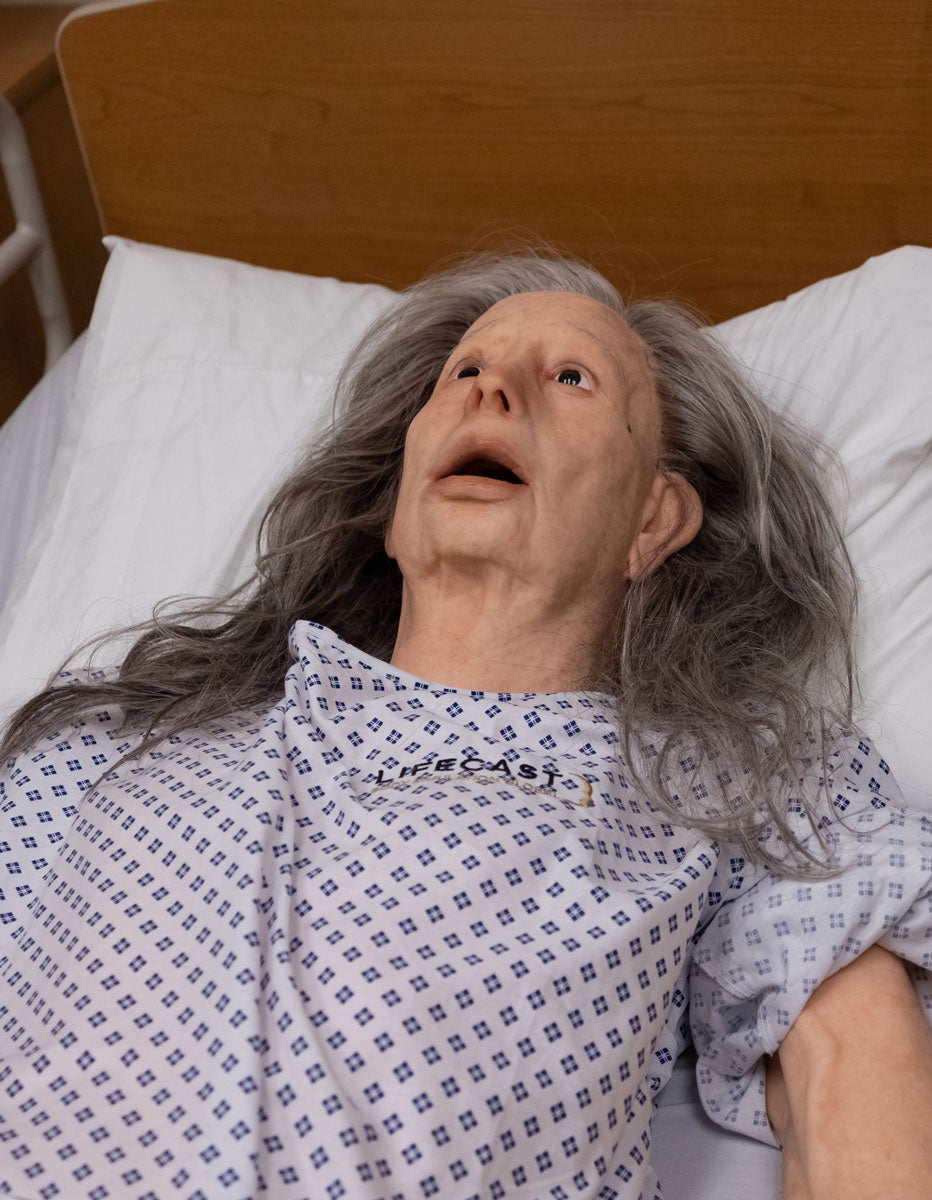
No, manikins in the Simulation Center aren’t reacting to a Halloween jump scare; while admittedly a bit uncanny, this facial expression actually serves an important purpose.
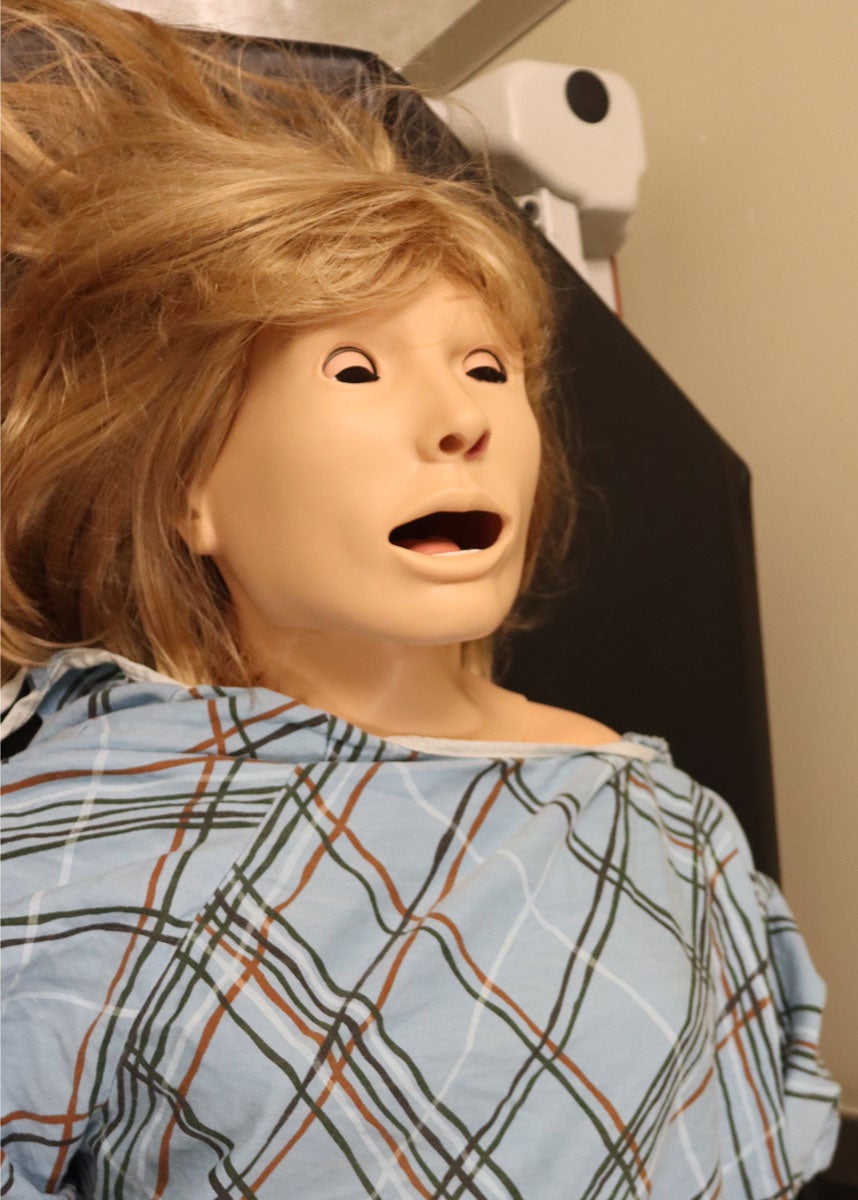
Jaw-dropping shock
Students must learn how to react to a patient emergency, such as a sudden loss of oxygen or circulation when a patient “crashes”. The first step is to check the patient’s airways and get them oxygen, hence the manikin’s permanently open-mouthed shocked look.
But why not give manikins a hinging jaw that can open and close as needed? The answer is durability. Adding a movable jaw would increase the chance that the jaw would break, and therefore decrease the effectiveness of the manikin.
So why do some manikins look plastic and some look like real people? This has to do with the manikins’ different fidelities – how accurately they portray fact or detail.
Low-fidelity manikins
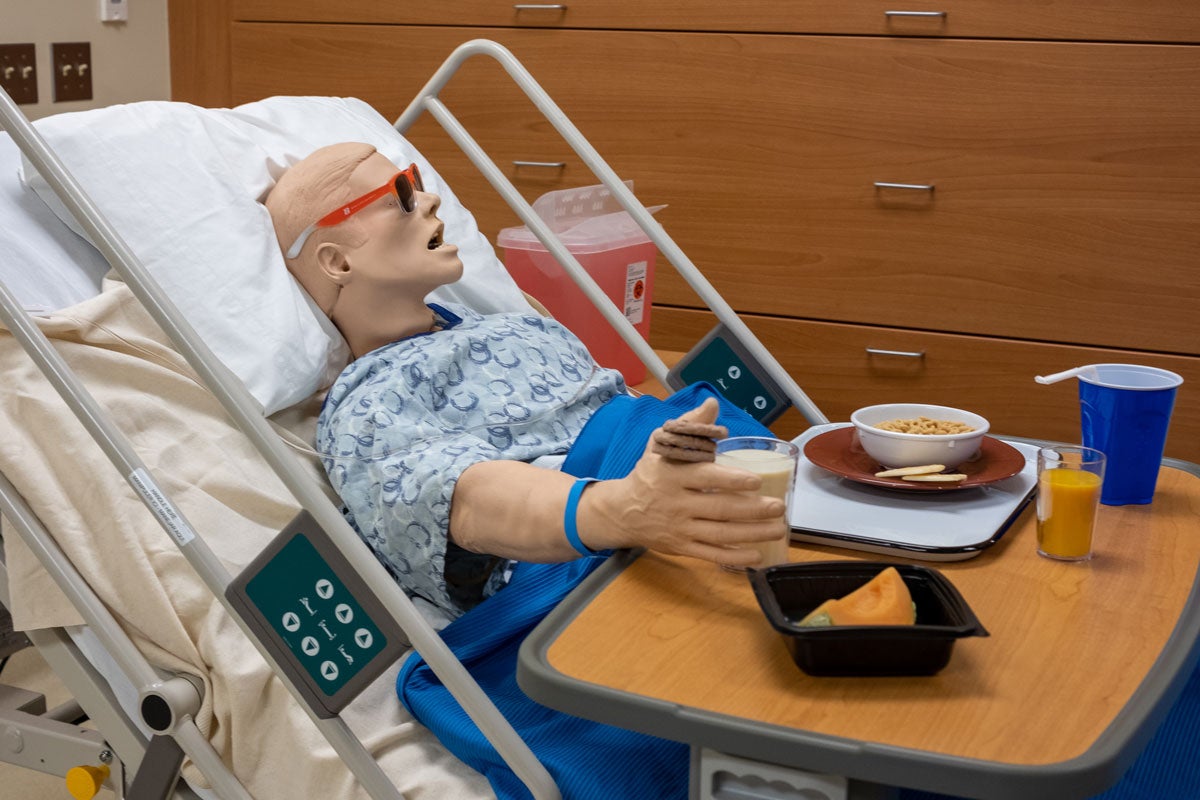
Although low-fidelity manikins are not technically very fancy, they’re incredibly useful. Students learn repetitive tasks on low-fidelity manikins – they’re often referred to as “task trainers.”
Students can practice dressing wounds, inserting nasogastric tubes and giving injections. And unlike a standardized patient, low-fidelity manikins won’t bruise or complain if you stick them one too many times.
High-fidelity manikins
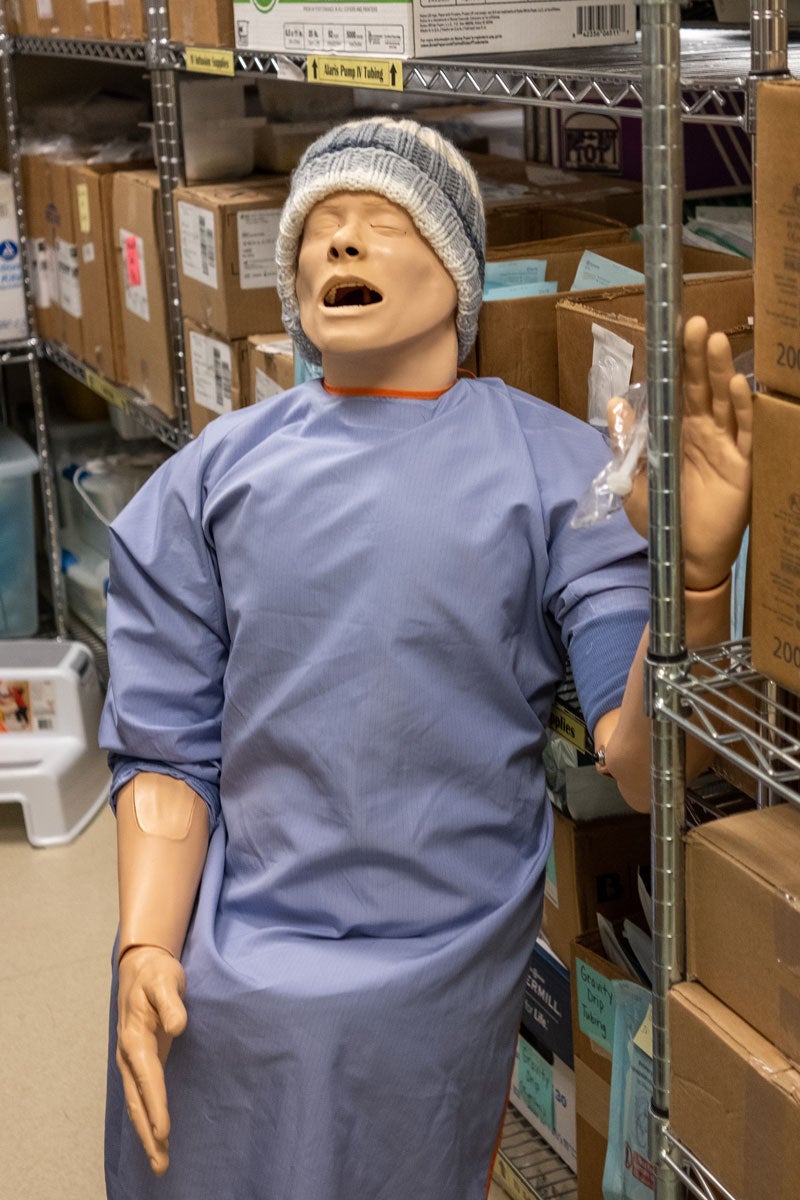
High-fidelity manikins like Hal have advanced breathing and circulation technology. Their eyes blink, their chests rise and fall and they have a detectable pulse. Their eyes can turn yellow, and their mouths can turn blue as an indication of a lack of oxygen.
These manikins are also important for students learning CPR, since they include technology to measure the depth of their compressions to see if – in real life – it would be a proper and effective compression. The data appears on a chart that shows if students were pushing too hard or not hard enough.
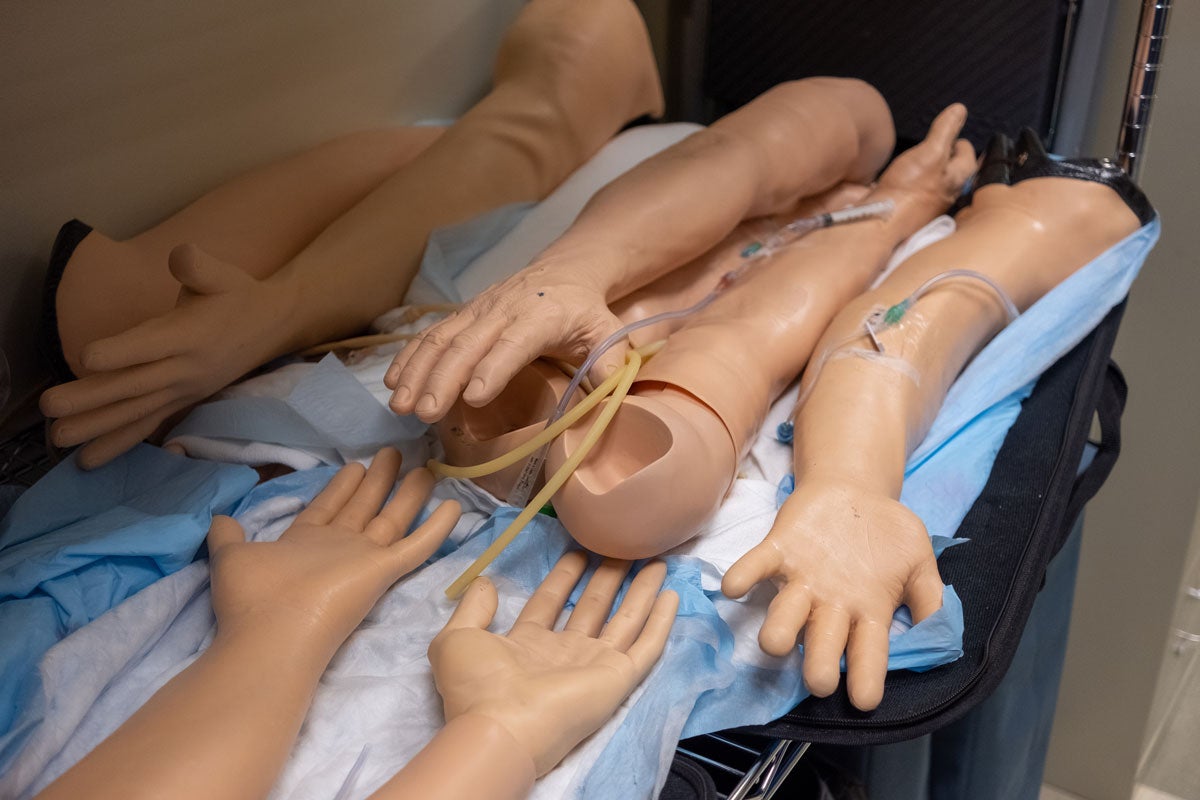
They also have interchangeable parts. For example, if a simulation scenario involves a patient with a broken tibia, staff can switch out Hal’s healthy leg for one with a bone protruding.
What is high visual fidelity?
While low- and high-fidelity usually describe the technical capabilities of a manikin, the Simulation Center also has what’s known as high visual fidelity manikins.
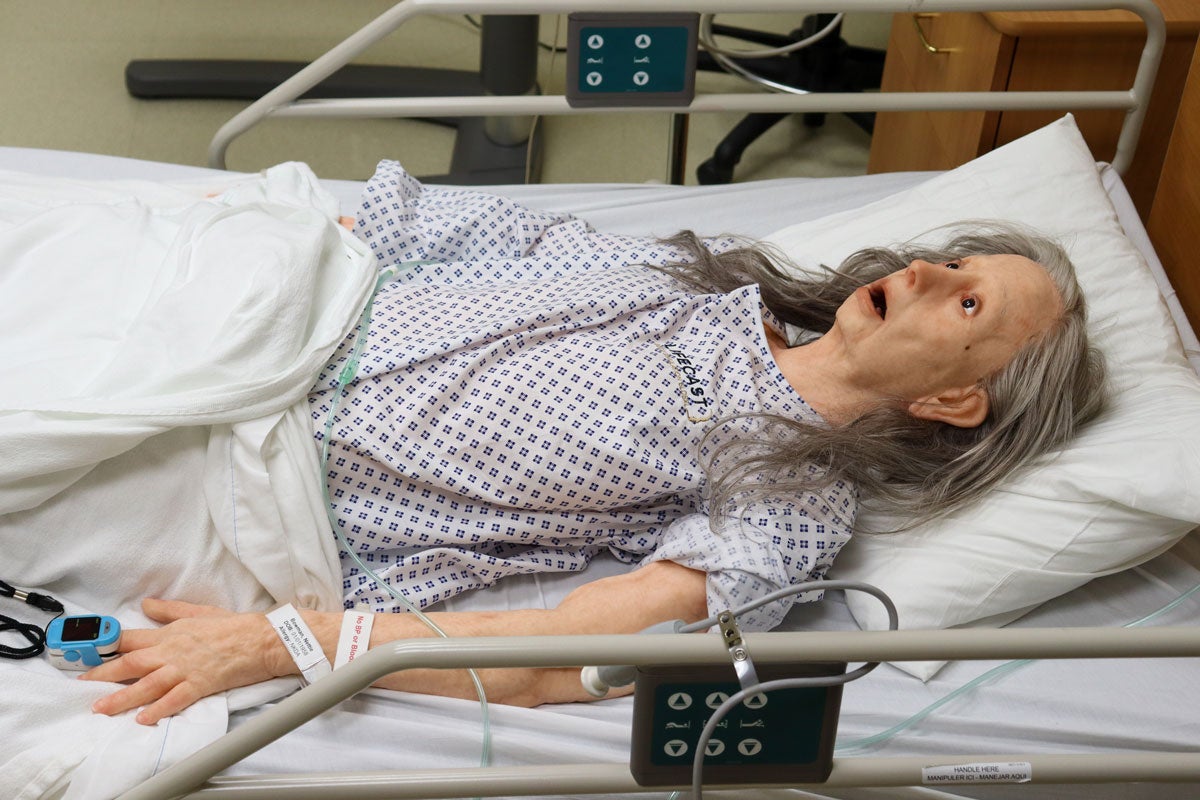
These are technically less complex than manikins like Hal, but they’re visually impressive. Manikins like this one are made from a silicone mold; then they’re hand painted and airbrushed for hyper-realistic effect.
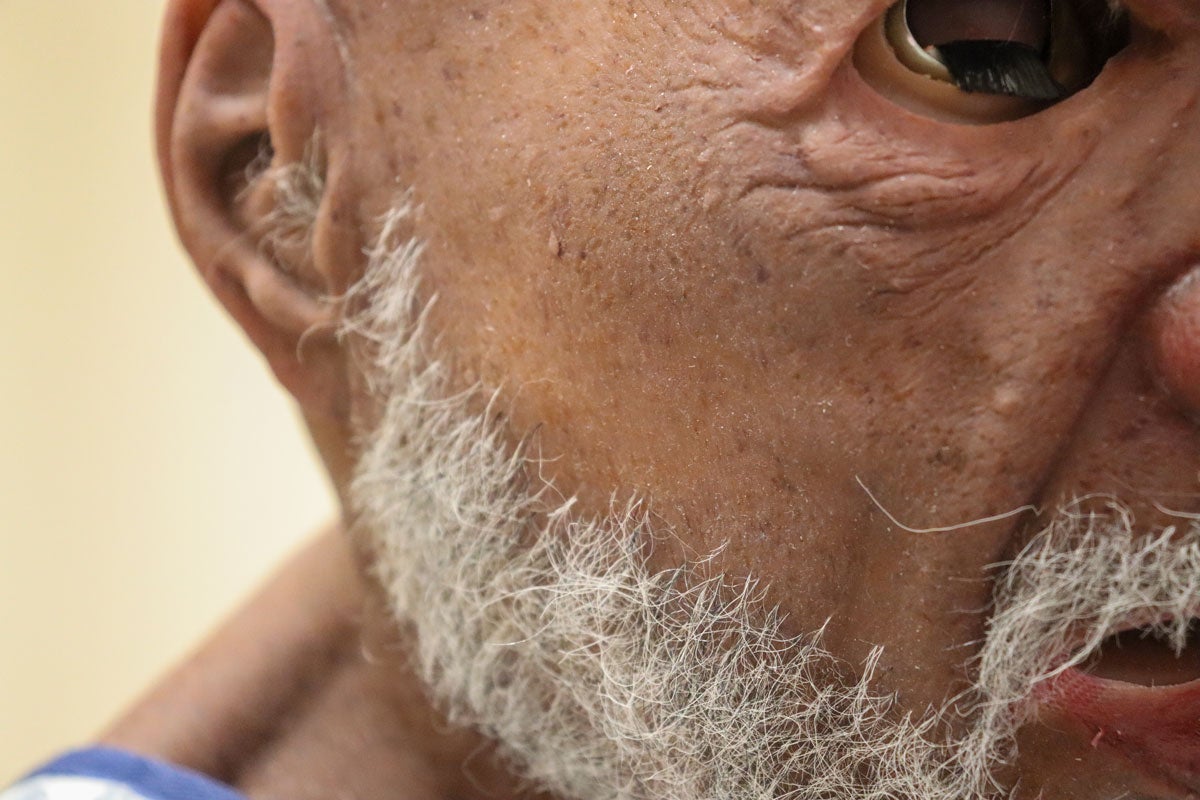
Because they are extremely realistic looking, students tend to immerse themselves in the simulated scenario more fully; it helps them feel like they’re treating a person, not a robot.
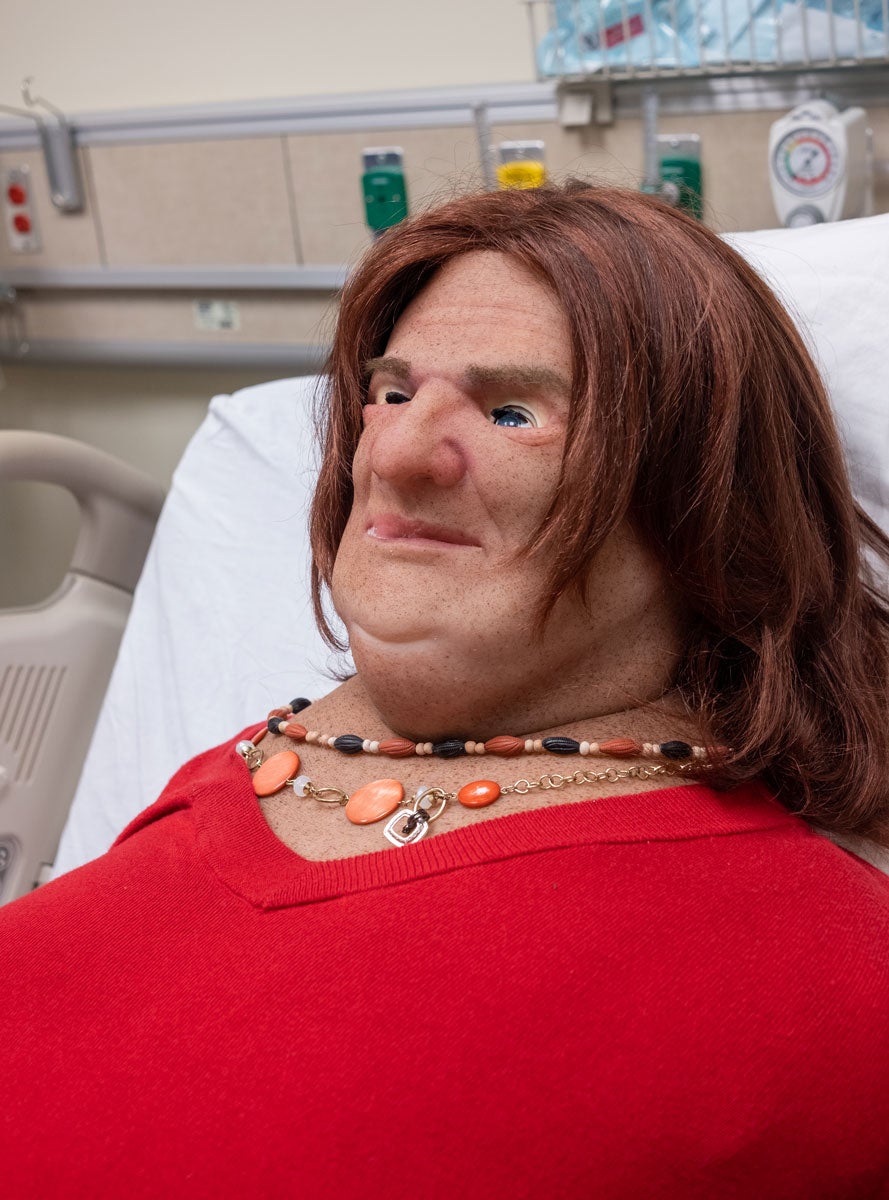
The Simulation Center also has a few hybrid manikins – these are high-fidelity manikins like Hal with a silicone mask creating a more realistic face.
The result? Hyper realistic manikins that can physically do more than the strictly silicone versions.
So despite their sometimes-unnatural appearances, manikins help students develop their skills by being able to practice over and over and over, so tasks become second nature.
